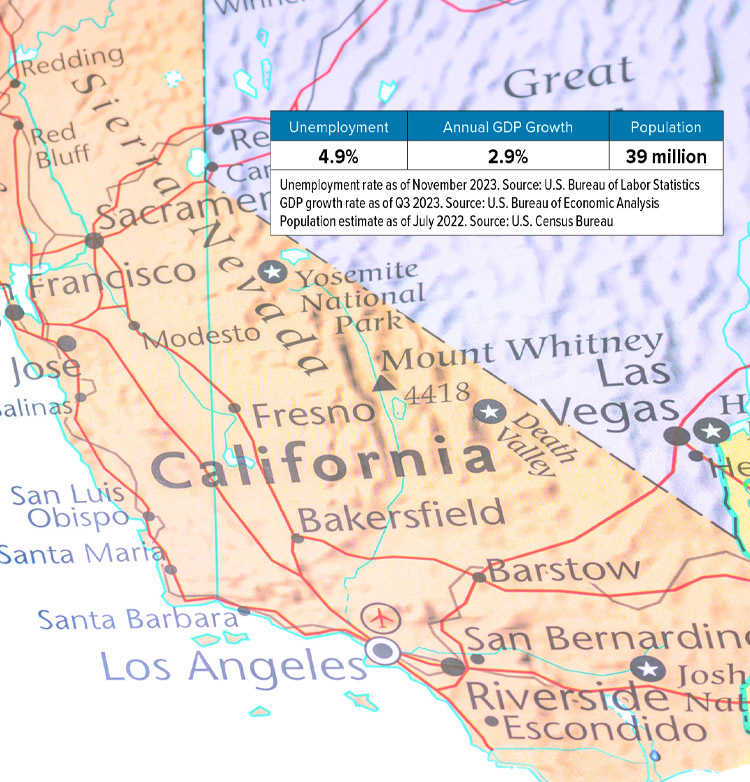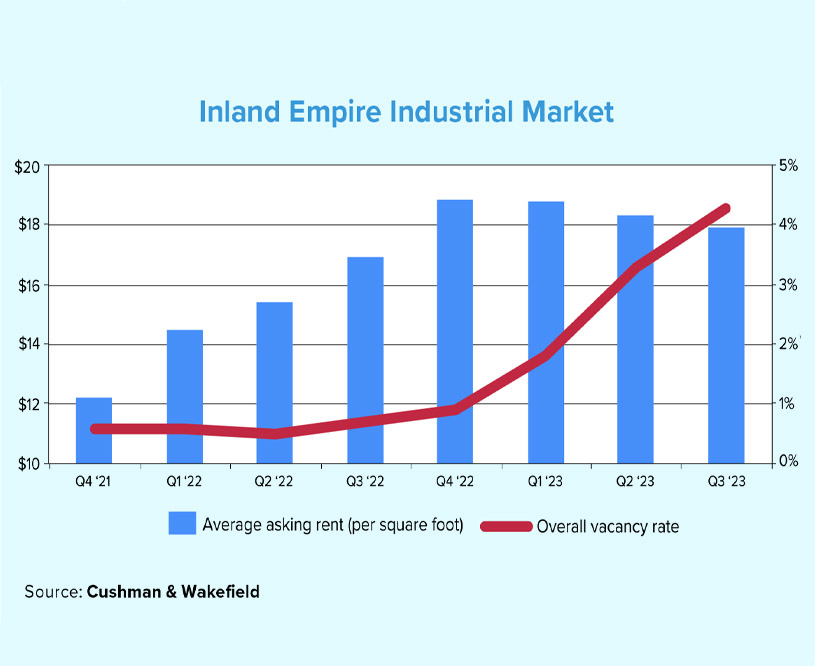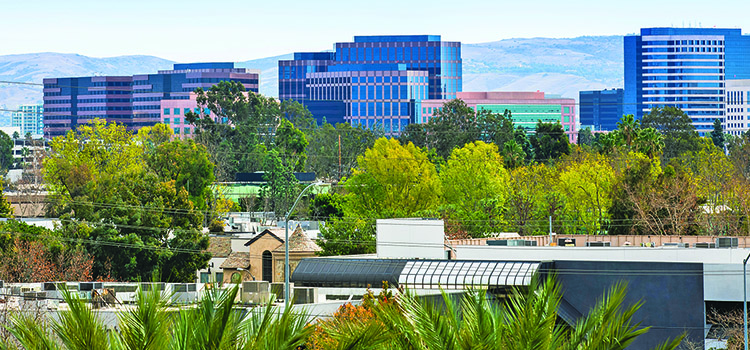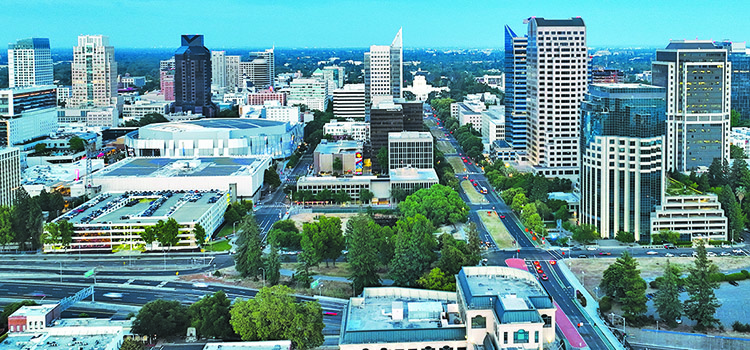California is attractive for many reasons. The weather is warm but milder than many other states. The natural beauty is highlighted by nine national parks, more than any other state. And jobs in the Golden State tend to pay well as the average annual salary of $73,220 trails only Massachusetts and New York.
But California also has a number of challenges, and housing is arguably the most pressing. About 1.3 million renter households in the state, or 22%, are classified as extremely low income, according to the National Low Income Housing Coalition. And the state has a shortage of nearly 1 million homes that are affordable and available for these people, defined as those who earn less than 50% of the area median income.
A report this past December in The Wall Street Journal delved into the regulatory maze that has stalled many affordable housing projects in California and made them more expensive to complete. In San Jose, the cost to build a single unit of low-income housing in 2022 was $983,700, up 24% from the previous year.
San Francisco granted less than half as many housing permits last year as New Braunfels, Texas, which has one-eighth the population of the City by the Bay. And in one extreme example of a project that has been delayed by political battles and financing hurdles, a 49-unit apartment building in Los Angeles is reportedly set to open later this year after the nonprofit developer acquired the land in 2007.

Gov. Gavin Newsom recently signed several pieces of legislation that are expected to benefit developers of mixed-income multifamily projects. One of these bills is designed to streamline the approval process for qualified housing developments in jurisdictions that don’t create enough new supply by removing the need for an environmental study.
California has an estimated $68 billion budget shortfall across its current three-year fiscal forecast that’s tied in part to weaker-than-expected personal income tax revenues. The 25% decline in tax collections during the 2022-2023 fiscal year was “similar to those seen during the Great Recession and dot-com bust,” state legislative analysts wrote.
Still, California’s gross domestic product grew at an annualized rate of 2.9% in third-quarter 2023, close to the U.S. average of 3.5%. As of this past August, California’s nonfarm payroll employment exceeded its pre-pandemic level by 447,600 jobs. Employment gains in sectors like logistics, technology, construction and health care have surpassed job losses in other industries.
Silicon Valley is a hotspot for data center investments. CBRE reported that all of the new data center supply delivered in Silicon Valley during the first six months of last year was preleased. With an inventory of 410.7 megawatts at midyear 2023, Silicon Valley was the nation’s third-largest market for data centers, trailing only Northern Virginia and Dallas-Fort Worth.
The Golden State’s largest office markets continue to struggle. Newmark reported that San Francisco had a vacancy rate of 27.3% and asking rents reached a six-year low point in third-quarter 2023. In Los Angeles, office-using employment dropped by 3% during the first eight months of last year and 44% of all office buildings had vacancy rates of more than 20%. ●

Nowhere has the cooldown in U.S. industrial real estate been more apparent than in California’s Inland Empire, centered around the cities of Riverside and San Bernardino. A midyear 2023 report from Colliers showed that the metro area, which is the country’s largest industrial market, posted negative quarterly net absorption for the first time in more than 13 years.
Third-quarter 2023 data from Cushman & Wakefield showed a negative absorption figure of 1.8 million square feet (msf) from July through September. But absorption during the first nine months of the year remained positive at 1.2 msf. Asking rents in the Inland Empire at the end of Q3 2023 stood at $17.96 per square foot, down from a peak of $18.85 in Q4 2022 but still well above the national average of $9.73 for industrial space.
Cushman & Wakefield also reported five industrial sales valued at more than $25 million in the area during the third quarter. The priciest deal during that time was BentallGreenOak’s $144 million purchase of nine buildings totaling 458,000 square feet in the Chino submarket.
What the Locals Say
The resort markets along the coast — including the Coachella Valley, Palm Springs and Palm Desert — have done phenomenally well. They’ve far surpassed what they were doing in 2019 and have enjoyed record top-line revenues and record net profits. We’re now seeing those markets start to taper off.
On the other end of the spectrum are the downtown hotel markets that are heavily reliant on commercial business, and that’s gone in the opposite direction as people have continued to work from home. You have fewer employees in the downtown market, so that’s definitely impacted guest stays, as well as food and beverage, at those hotels.
We publish a biannual survey, and through the first six months of 2023, individual hotel sales transactions in California were down 53% from where they were in 2022. That is a record decline. We’ve been tracking sales for over 20 years and it’s even surpassed what we saw in the first six months of 2009. And that’s just tied to a huge disconnect between the buyer and seller expectations.
Hotels have not yet seen value declines of 70% to 80% like those seen in office space. But a classic example would be two of the largest hotels in downtown San Francisco. They’re both Hilton products, and in 2016, those hotels appraised for $1.6 billion. The publicly traded REIT that owns them has given the keys back to the lender. The debt is $725 million.

President
Atlas Hospitality Group
3 Cities to Watch
Irvine

This Orange County city has added a whopping 100,000 residents since 2010 to reach a current population of 314,000. Irvine serves as the home base for fintech firms like Acorns and Cloudvirga, as well as a number of startups in the software, digital media and real estate sectors. Three Nobel Prize-winning researchers hail from the University of California at Irvine, which has a highly diverse group of students and faculty.
Oakland

After losing its pro football and basketball teams in recent years, Oakland received another economic blow this past November when the Athletics baseball team announced its pending relocation to Las Vegas. Affordable housing is a key issue in the East Bay hub. Brooklyn Basin, a major redevelopment project that would build 3,700 new homes on the site of a former shipping dock, is still many years away from completion.
Sacramento

From agriculture and health care to education and clean energy, the California state capital has a diverse economy that produces more than $160 billion per year in goods and services. Colliers reported that the $773 million in commercial real estate sales across the metro area in first-half 2023 was down 63% year over year. Industrial and multifamily deals accounted for a respective 39% and 24% of this six-month sales volume.
Sources: Allen Matkins, Built in LA, CalMatters, CBRE, Colliers, Cushman & Wakefield, Executech, Forbes Advisor, KQED, National Low Income Housing Coalition, Newmark, SFist, The New York Times, The Wall Street Journal, UCLA Anderson School of Management, University of California at Irvine, Visit California, Wisevoter






